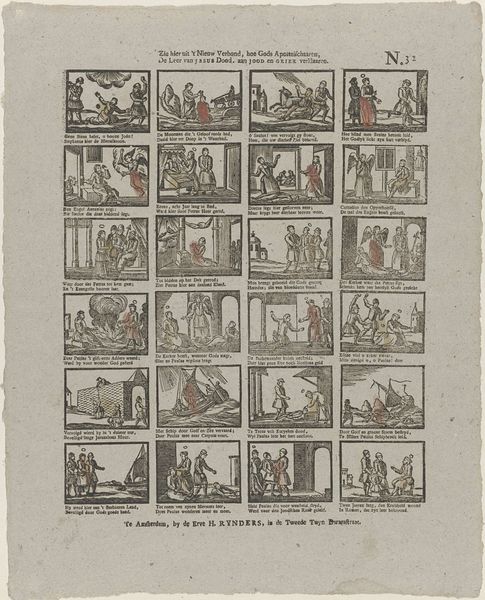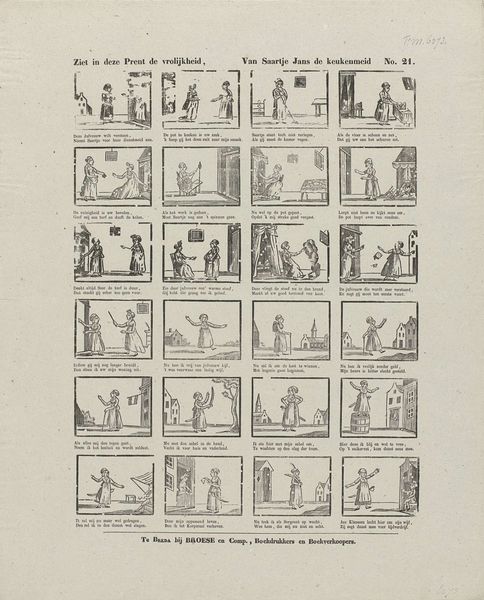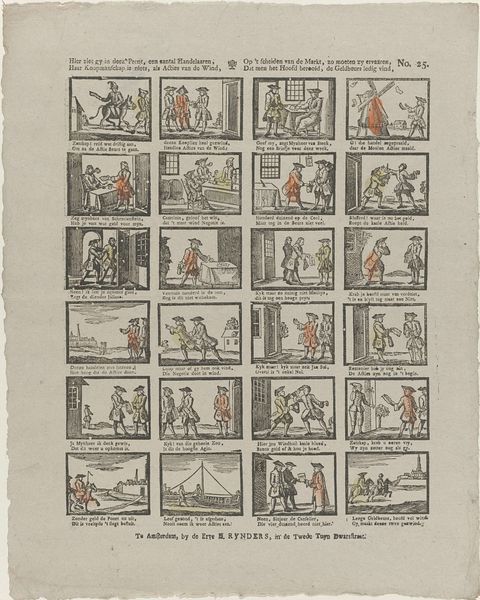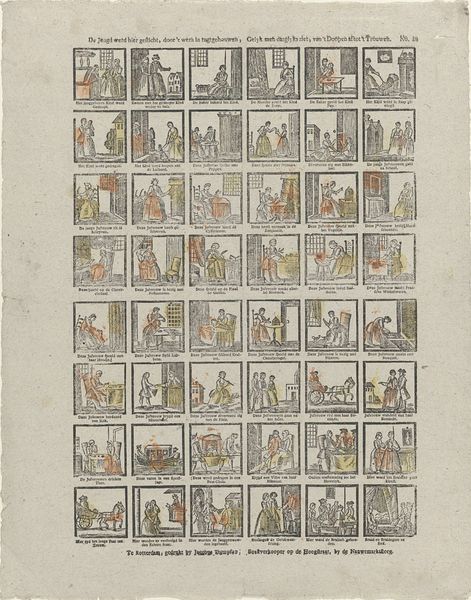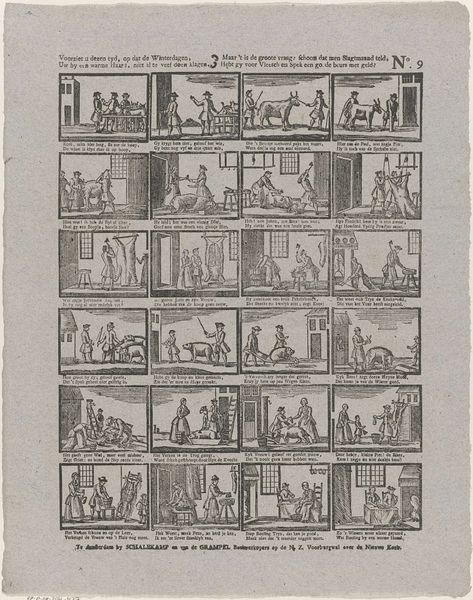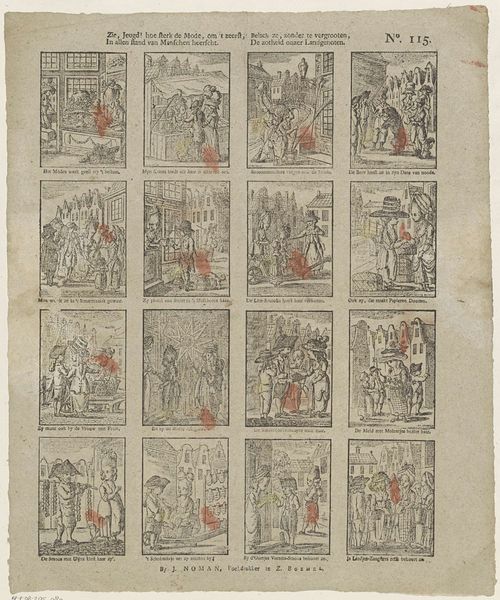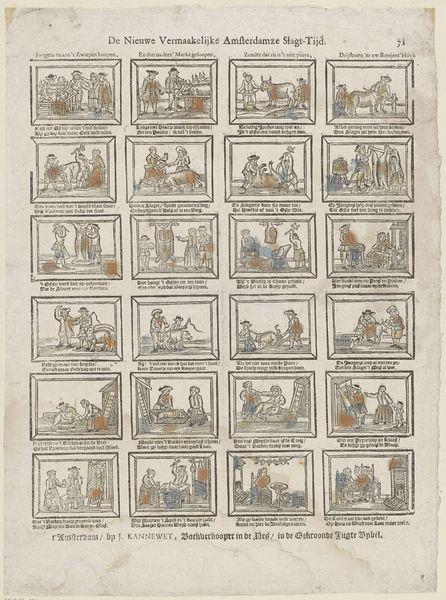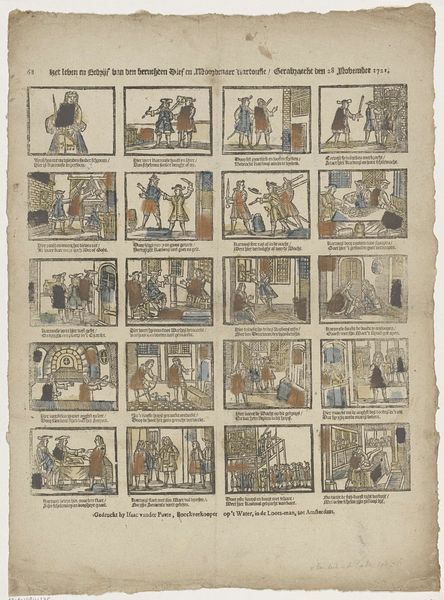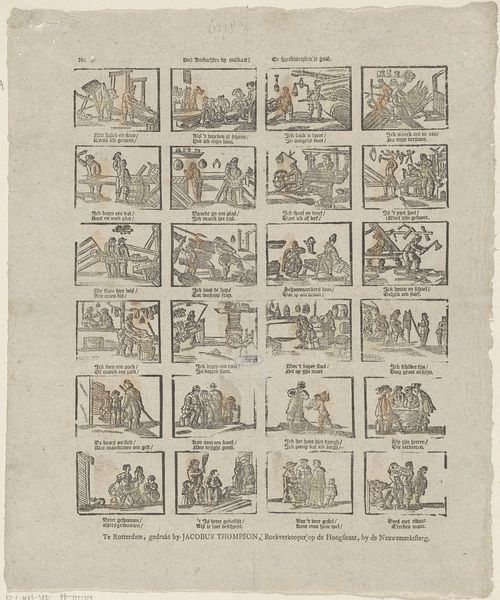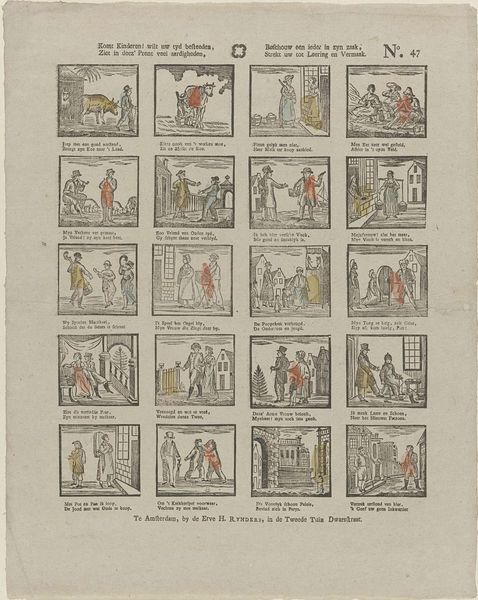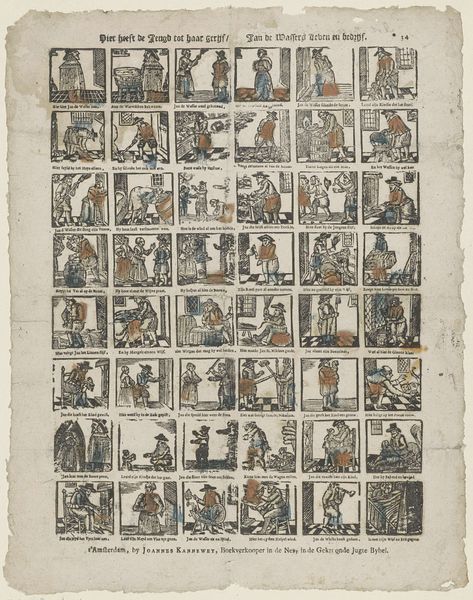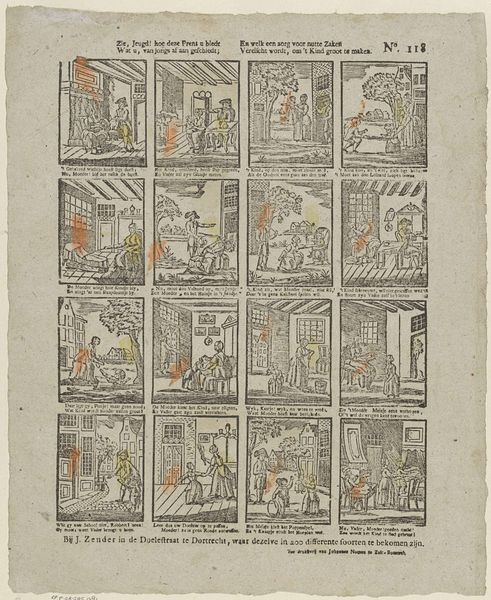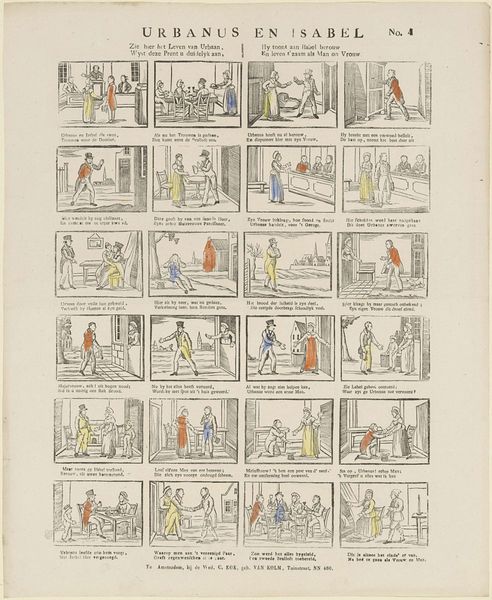
print, engraving
medieval
narrative-art
old engraving style
landscape
figuration
form
folk-art
comic
line
genre-painting
history-painting
northern-renaissance
engraving
realism
Dimensions: height 403 mm, width 324 mm
Copyright: Rijks Museum: Open Domain
Curator: "De Boere Kermis-Vreugd", a print created between 1831 and 1854 and housed here at the Rijksmuseum, offers a fascinating look at 19th-century Dutch folk life. Its style draws from realism with its attention to landscapes, but also evokes the comic strip medium to give you an insight into that narrative. Editor: My first impression? A frenetic scrapbook of everyday absurdities, all packed onto a single sheet! It almost feels like the precursor to a silent movie, each frame promising some wild antic or folksy wisdom. The use of line and shadow also helps to provide a contrast with some small applications of color. Curator: Precisely. We can dissect its formal arrangement. Note the grid-like structure—a series of miniature scenes presented as a unified whole, which are all accompanied by text. Observe, also, how the line work varies in thickness and density to convey texture and depth, a sophisticated usage of an early print technique. The consistent visual language allows the viewer to create stories out of each scenario. Editor: Absolutely. But let's not overthink it! Just look at the chaotic energy. From dancing skeletons to drunken peasants, it’s as if Erve H. Rynders was saying, "Life is messy, hilarious, and slightly unhinged.” It’s folk art in its rawest form, both captivating and slightly unsettling. The stories present also feel more human than they otherwise would because they seem raw. Curator: The piece utilizes its textual components to contextualize each individual frame within a series of small tales and adventures. Semiotics reveals that the visual language operates cohesively with the surrounding text, each amplifying the narratives within. Editor: So, Erve H. Rynders created not just an observation, but a storybook about common, shared folk culture! Curator: I appreciate how you’ve managed to extract the human qualities that permeate Rynders' work. It’s a rich tapestry of everyday Dutch existence that manages to transcend its historical setting, it certainly reveals much of a historical time period that otherwise would be lost to the sands of time. Editor: Well, I think that looking through this piece is like rummaging through a whimsical attic, stumbling upon forgotten treasures and dusty secrets—all rendered in delightfully chaotic detail. What a kermis vreugd!
Comments
No comments
Be the first to comment and join the conversation on the ultimate creative platform.
